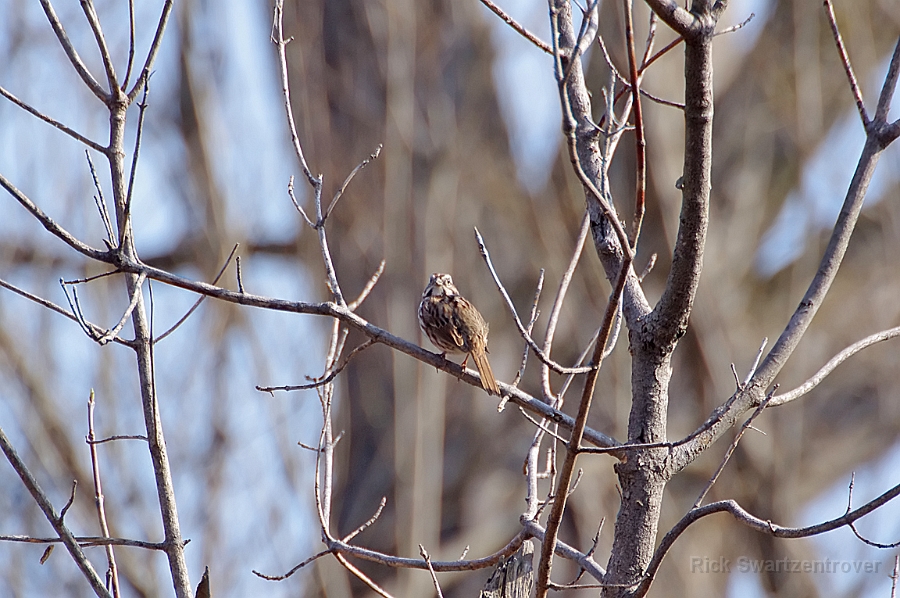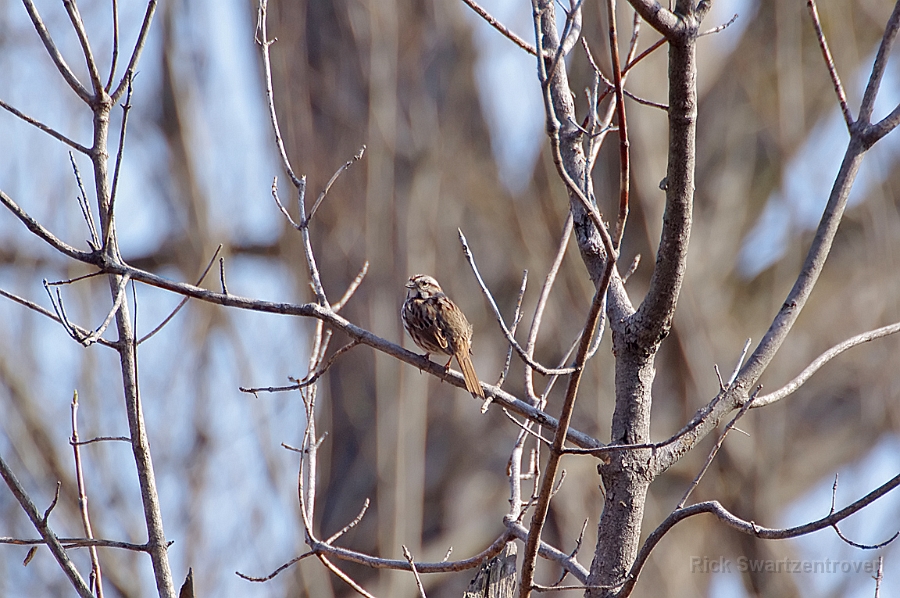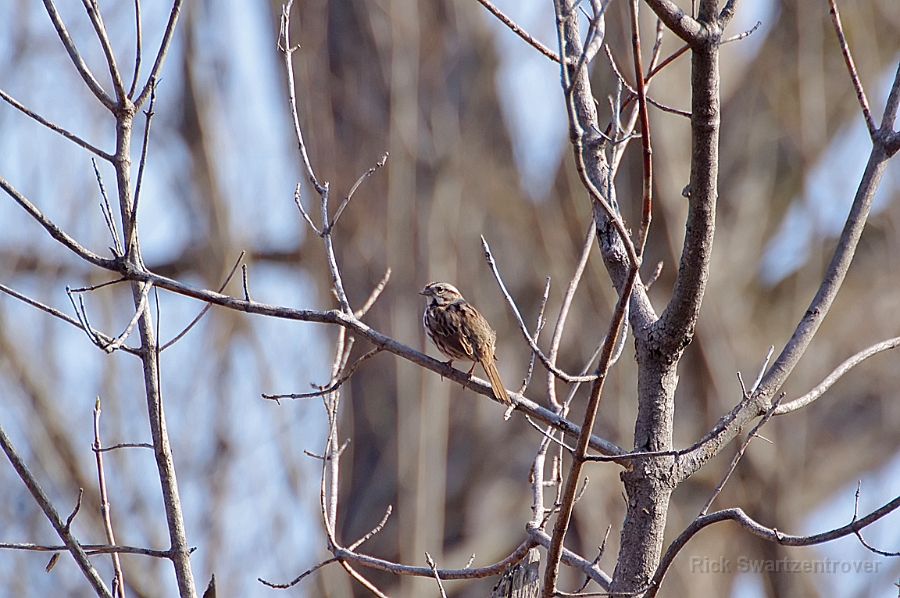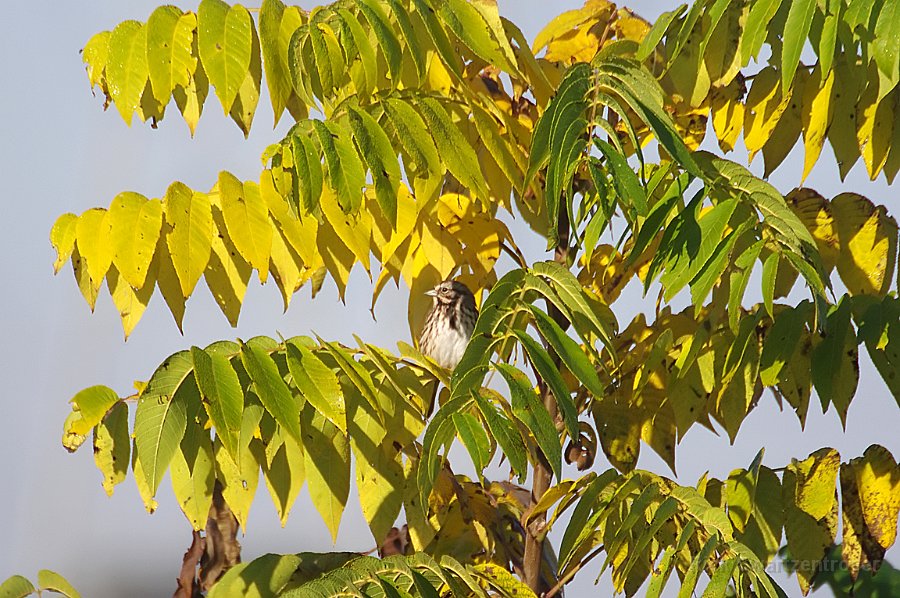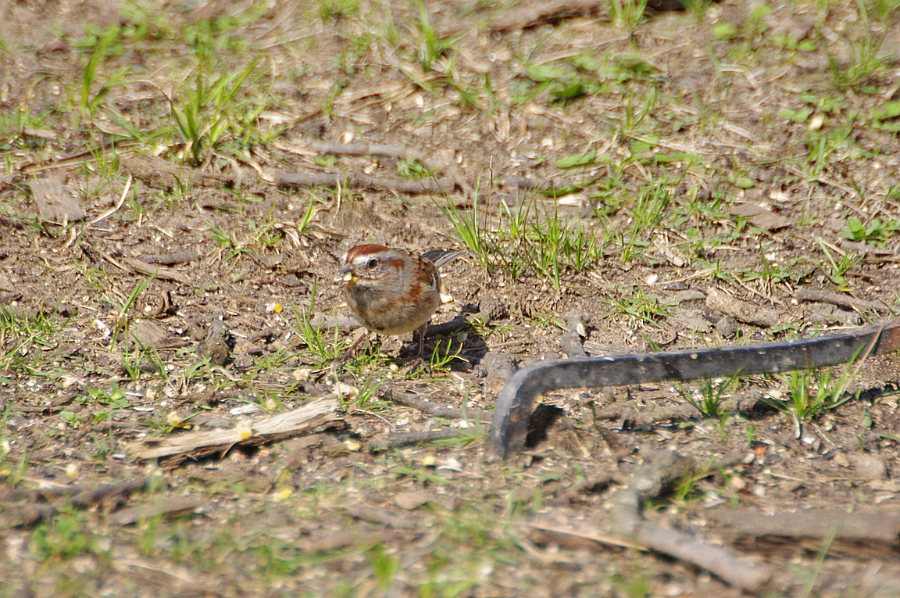|
|
|
 |
American Tree Sparrow
|
| Spizella arborea | |
Plump and long-tailed, American Tree Sparrows are busy visitors in winter backyards and weedy, snow-covered fields across southern Canada and the northern United States. Hopping up at bent weeds or even beating their wings to dislodge seeds from grass heads, they scratch and peck the ground in small flocks, trading soft, musical twitters. Come snowmelt, these small rusty-capped and smooth-breasted sparrows begin their long migrations to breeding grounds in the tundra of the far North.
Interesting Information
-
Misleadingly named by European settlers reminded of Eurasian Tree Sparrows back home, American Tree Sparrows are ground birds. They forage on the ground, nest on the ground, and breed primarily in scrubby areas at or above the treeline.
-
American Tree Sparrows need to take in about 30 percent of their body weight in food and a similar percentage in water each day. A full day's fasting is usually a death sentence. Their body temperature drops and they lose nearly a fifth of their weight in that short time.
-
Like many songbirds, American Tree Sparrows synchronize hatching and fledging so all of the chicks join in the foraging pretty much together. Although the female lays only one egg per day until she's got 4 to 6 eggs (and may even skip a day between eggs), the chicks hatch within hours of each other and may not even hatch in the order their eggs were laid.
-
The longevity record among banded American Tree Sparrows is 10 years 9 months.
-
Like most birds, American Tree Sparrows are sensitive to changes in day length, and this doesn't seem to depend on vision. Blind tree sparrows in captivity show normal responses to increasing day length in late winter, including sex organ growth.
Description
Adult Description
Size & Shape
American Tree Sparrows are small, round-headed birds that often fluff out their feathers, making their plump bodies look even chubbier. Among sparrows, they have fairly small bills and long, thin tails.
-
Length Range: 16 cm (6.25 in)
-
Weight: 20 g (0.7 oz)
-
Size: 2. Small (5 - 9 in)
Color Pattern
A rusty cap and rusty (not black) eyeline on a gray head, a streaked brown back, and a smooth gray to buff breast in both male and female American Tree Sparrows give an overall impression of reddish-brown and gray. A dark smudge in the center of the unstreaked breast is common.

Photo taken from: The Sibley Field Guide by David Allen Sibley

© 2003 Cornell Lab of Ornithology
|
Habitat |
|
In summer, American Tree Sparrows breed near the northern treeline, where straggling thickets of alder, willow, birch, and spruce give way to open tundra. Though some American Tree Sparrows nest in open tundra, most territories include at least a few small trees that the males can sing from, along with a source of water. During spring and fall migrations, they'll search out weedy fields, marshes, hedgerows, and open forests for foraging between nights of flying. They winter in similar habitats in their southern range, adding gardens and backyards with feeders in settled areas. |
|
Behavior |
|
In winter, American Tree Sparrows often forage industriously in small flocks. They scratch the ground for dried seeds, and hop up at bent-over weeds or along low branches gathering catkins or berries. Inventive in their foraging, they've been seen beating grass seedheads sticking up out of the snow with their wings to release seeds they can pluck from the ground. These hardy birds often continue foraging undaunted as winter blizzards roll in. Individuals may take solitary perches on low branches or atop stalks like goldenrod. In their summer range, they search out insects from weeds and bushes, occasionally snatching moths or mosquitoes from the air as well. As their spring migration progresses, flocks dissolve and American Tree Sparrows pair up. Females spend much of their time on the nest they build and rarely venture outside the male's territory. Males roost nearby, visiting the nest frequently. Pairings don't outlast breeding season. |
|
Food |
|
American Tree Sparrows eat seeds, berries, and insects, but the relative proportions of those foods change radically from winter to summer months. From fall through spring, they're almost exclusively vegetarian, eating grass, sedge, ragweed, knotweed, goldenrod, and other seeds, as well as occasional berries, catkins, insects, insect eggs, and larvae. In settled areas, they happily eat small seeds from feeders - including millet scattered on the ground. In summer, after their migration north, they begin eating a wider and wider variety of insects until, during June and July they eat almost exclusively insects such as beetles, flies, leafhoppers, wasps, moths, and caterpillars, as well as spiders and snails. These protein-rich foods are particularly important for the growing chicks. Once the chicks are gone, their diet begins reverting to its winter pattern. They may augment their summer food with seeds from alder, spruce, blueberries, and cranberries. |
Taxonomy
| Kingdom: | Animalia |
| Phylum: | Chordata |
| Subphylum: | Vertebrata |
| Class: | Aves |
| Order: | Passeriformes |
| Family: | Emberizidae |
| Genus: | Spizella |
| Species: | Spizella arborea |
| Subspecies: | Spizella arborea arborea |
| Spizella arborea ochracea |
Similar Species |
|
|
Bird Sound |
|
When feeding or foraging in flocks, American Tree Sparrows toss back and forth a musical twitter, sometimes described as a teel-wit or teedle-eet, which may vary from flock to flock. Alarmed, they give a hard tseet. In flight, they make a softer tsiew. Females solicit copulation with a whey-whey-whey while fluttering their wings and raising their tails. |
|
Eggs look like this |
|
Photo taken from: ARCTOS Collaborative Collection Management Solution |
